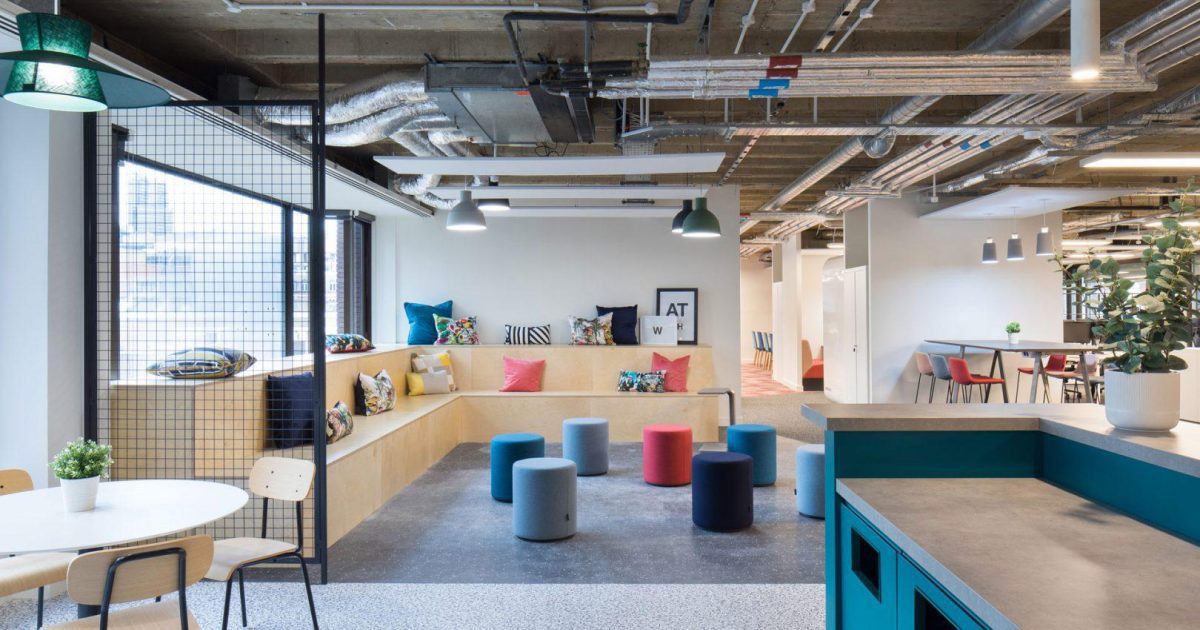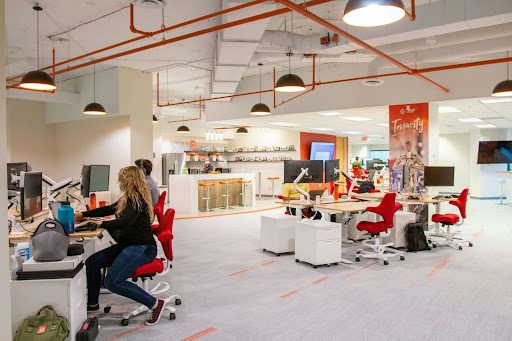The business landscape has transformed dramatically over the past few years. Companies no longer need to be tied to a single location or committed to expensive, long-term office leases that drain resources and limit agility. Today’s most successful businesses understand that flexibility isn’t just a buzzword; it’s a fundamental strategy that can make or break growth trajectories.
Whether you’re a startup founder looking to expand into new markets, a mid-sized company considering a strategic relocation, or an enterprise exploring distributed team models, the decisions you make about where and how you operate can have profound impacts on your bottom line, team satisfaction, and long-term sustainability. This shift toward location independence and workspace flexibility has created new opportunities but also new challenges that require careful planning and execution.
The key to thriving in this environment lies in understanding two critical components: how to execute seamless relocations when physical moves are necessary, and how to leverage flexible workspace solutions that can scale with your business needs. Let’s explore how forward-thinking companies are navigating these decisions to build more resilient, adaptable organizations.
The Strategic Case for Business Relocation
Relocating a business is one of the most significant decisions any company can make. The reasons vary widely: accessing new talent pools, reducing operational costs, getting closer to key customers or suppliers, or simply finding a more favorable business environment. According to recent surveys, nearly 40% of businesses consider relocation within their first five years of operation, and that percentage increases for companies experiencing rapid growth.
But relocation isn’t just about picking a new address on a map. It’s a complex process that touches every aspect of your operation. From logistics and equipment transport to employee transitions and customer communications, a poorly executed move can disrupt operations for months and damage relationships that took years to build. On the flip side, a well-planned relocation can revitalize a business, opening doors to opportunities that would have been impossible in the previous location.
The financial implications alone require serious consideration. Moving costs can quickly spiral out of control without proper planning and budgeting. There’s the physical transportation of assets, the potential loss of productivity during the transition, the costs associated with breaking existing leases or selling property, and the setup expenses at the new location. Smart business leaders build in contingency buffers of 15-20% beyond initial estimates to account for unexpected challenges.
Beyond the financial aspects, there’s the human element. Your team members have lives, families, and roots in their current location. Some will embrace the change and see it as an adventure; others may view it as a deal-breaker. Clear, honest communication about why the move makes strategic sense, what support the company will provide, and what the timeline looks like can make the difference between retaining your top talent and facing a mass exodus at the worst possible time.
Executing Flawless Physical Transitions
When the time comes to execute a physical move, the quality of your logistics partner can make all the difference. This is where many businesses discover that not all moving services are created equal. The cheapest option often becomes the most expensive when you factor in damaged equipment, extended downtime, and the stress of dealing with unreliable vendors.
Professional moving services understand the unique challenges businesses face. They know that your servers can’t just be tossed in a truck, that confidential documents require special handling, and that timing is everything when you’re trying to minimize operational disruption. For businesses operating in regions like Australia where distances between major cities can be substantial, working with experienced removalists with Find a Mover ensures you’re partnering with vetted professionals who understand the complexities of commercial relocations and can provide transparent quotes without hidden surprises.
The best moving partners don’t just show up with a truck on moving day. They work with you weeks or even months in advance to create detailed inventories, develop phased moving plans that keep critical operations running, and provide contingency strategies for potential complications. They understand that your business can’t just shut down for a week while everything gets transported to a new location.
Consider the approach of companies that have executed successful multi-location moves. They typically create detailed transition teams with representatives from IT, operations, HR, and facilities management. These teams work together to prioritize what moves when, ensuring that critical infrastructure is set up and tested at the new location before the main transition begins. This kind of planning turns what could be a chaotic disaster into a smooth, professional transition that actually impresses clients and employees rather than causing anxiety.
The Flexible Workspace Revolution
While some businesses are navigating physical relocations, others are questioning whether traditional office spaces make sense at all anymore. The rise of remote and hybrid work models has fundamentally changed how we think about where work happens. But here’s what many companies discovered during the rapid shift to remote work: while working from home solves some problems, it creates others.
Employees miss the social connections, the clear boundaries between work and personal life, and yes, even the commute that creates mental transition time between roles. Meanwhile, businesses struggle with maintaining company culture, onboarding new employees effectively, and creating spaces for the spontaneous collaborations that drive innovation. The solution for many has been embracing flexible workspace models that provide professional environments without the long-term commitments and high overhead of traditional leases.
Flexible workspaces come in many forms. There are coworking spaces that offer desk rentals by the day or month, private offices within shared buildings, fully furnished executive suites, and hybrid models that combine various options. What they all share is a fundamental shift away from the old model where companies sign 5-10 year leases for spaces they might outgrow in two years or struggle to fill if they downsize.
The financial advantages are compelling. Traditional office leases require significant capital investment upfront: security deposits often equal to several months’ rent, buildout costs to customize the space, furniture and equipment purchases, and ongoing maintenance expenses. Flexible workspaces eliminate most of these barriers, allowing companies to redirect capital toward growth activities like product development, marketing, and talent acquisition instead of tying it up in real estate.
But the benefits extend beyond just finances. Flexible workspaces provide instant scalability. Hiring five new team members next quarter? You can easily add desks. Landing a major project that requires temporary expansion? Short-term spaces are available. Downsizing after a project ends? You’re not stuck paying rent on empty desks for years. This agility is especially valuable in uncertain economic times when the ability to quickly adjust operating costs can determine whether a business survives or fails.
Global Workspace Solutions for Distributed Teams
As businesses expand internationally, the workspace equation becomes even more complex. Companies want presence in key markets without committing to the expense and hassle of establishing traditional offices in multiple countries. This is where strategic use of international flexible workspace providers becomes a game-changer.
Take Singapore as an example. As one of Asia’s premier business hubs, Singapore offers unparalleled access to regional markets, a highly educated workforce, and a business-friendly regulatory environment. But establishing a traditional office in one of the world’s most expensive real estate markets can be prohibitively costly, especially for companies just testing the waters in Asian markets. This is where solutions like JustCo Coworking Space in Singapore provide an elegant answer, offering professional spaces with all the amenities and prestige of a premium office without the astronomical setup costs and long-term commitments that traditional leases require.
The advantages of this approach multiply when you’re operating across multiple time zones and markets. Your team members in different regions get professional environments designed for productivity, clients see you as an established presence rather than someone working from their hotel room, and you maintain the flexibility to scale up or down based on how each market performs. It’s the kind of strategic agility that used to be available only to massive corporations with deep pockets, now accessible to nimble businesses of any size.
International flexible workspace providers also understand the local business cultures and practices in ways that can smooth your entry into new markets. They can often facilitate introductions to potential partners or clients, provide administrative support in local languages, and help navigate regulatory requirements that might otherwise slow your expansion plans. In essence, they become partners in your growth rather than just vendors providing desks and WiFi.
Integrating Flexibility Into Your Business Strategy
The real power emerges when companies integrate both physical flexibility and workspace flexibility into their overall business strategy. This isn’t about choosing between relocating or using flexible spaces, it’s about understanding when each approach serves your strategic objectives and how they can complement each other.
Consider a technology startup that begins in a coworking space in its home city. As it grows and secures Series A funding, it might relocate to a larger facility in a tech hub where talent is more abundant. But as it expands internationally, instead of replicating the same model everywhere, it strategically uses flexible workspaces in new markets until it has sufficient scale to justify permanent offices. Meanwhile, even in its headquarters location, it might maintain satellite coworking memberships for employees who live far from the main office, reducing commute times and improving work-life balance.
This kind of hybrid approach requires more sophisticated thinking about how work actually gets done. It means investing in robust digital collaboration tools, being more intentional about when face-to-face interaction is essential, and creating clear policies about when and how employees use different workspace options. But the payoff is a more resilient business model that can weather economic uncertainties, talent market changes, and shifts in how customers prefer to engage with you.
Moving Forward With Confidence
The businesses that will thrive in the coming years are those that view location and workspace decisions not as fixed constraints but as strategic variables they can adjust to optimize performance. This means being willing to make bold moves when opportunities arise, whether that’s relocating to access new markets or adopting flexible workspace models that reduce overhead and increase agility.
The key is approaching these decisions with the same rigor you’d apply to any major business investment. Do your research, understand the true costs and benefits, work with experienced partners who can guide you through the complexities, and communicate clearly with everyone affected by the changes. When done right, strategic relocations and flexible workspace strategies don’t just reduce costs or solve logistical problems. They become competitive advantages that enable your business to move faster, take more calculated risks, and build the kind of adaptable organization that can succeed regardless of what changes the market throws your way.
The future belongs to the flexible, the strategic, and the bold. Is your business ready to embrace that future?








































